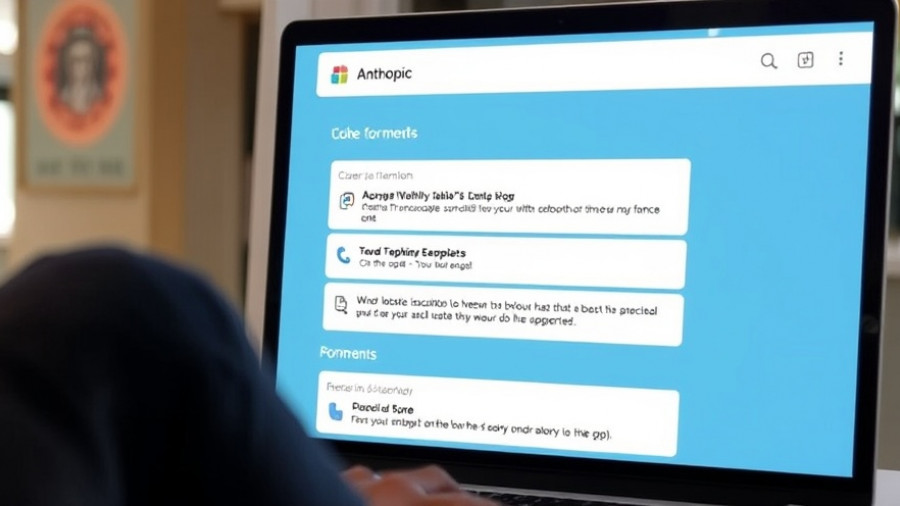
A Milestone for Claude AI: Expanding the Boundaries of AI Utility
In a striking move, Anthropic has revealed plans to dramatically enhance its Claude AI capabilities, boosting its memory to an astounding 1 million tokens. This expanded capacity is representative of a significant leap in AI technology, aimed particularly at governmental applications. Priced at just $1 annually for all three branches of the US government—executive, legislative, and judiciary—this initiative positions Anthropic as a frontrunner in public sector AI integration.
The Implications of Enhanced AI Memory
The ability for Claude to process 1 million tokens means it can now handle more complex queries and provide comprehensive analyses far beyond its current capabilities. In comparison, this expanded context window—which translates to around 750,000 words—enables the AI to analyze volumes of text similar to the entirety of the 'Lord of the Rings' trilogy all at once. This is a fivefold increase from its original capacity of 200,000 tokens and significantly surpasses OpenAI’s competitor models, fortifying Claude's unique position in the rapidly evolving AI landscape.
Targeting All Government Branches: A Bold Strategy
While OpenAI has made headlines with its $1 offering for the executive branch, Anthropic is setting a new precedence by reaching out to all facets of the government. This holistic approach could allow for more seamless interoperability between branches and could lead to a unified framework for AI utilization in public service. It also reflects a strategic positioning in what is becoming a highly competitive arena for government contracts related to AI technologies.
Future Trends: What This Means for AI Development
The future of AI appears brighter as companies like Anthropic push the boundaries of memory and processing capabilities. As AI continues to grow in sophistication, we can expect new applications that can leverage this increased capacity, particularly in fields such as public policy, law, and healthcare. Integrating powerful AI like Claude into government operations could streamline processes, enhance decision-making, and serve the public much more efficiently.
Counterarguments: A Need for Skepticism?
While the benefits of AI integration are numerous, it's also crucial to approach these developments with a dose of skepticism and caution. Concerns surrounding data privacy, bias, and accountability must be addressed as AI becomes further entrenched in government operations. Critics may argue that relying on AI for decision-making erodes human judgment and could lead to unforeseen consequences. A transparent implementation process is paramount to ensure that these technologies serve the public interest without compromising ethical standards.
Conclusion: Navigating the New Frontier of AI
As we witness these technological advancements, the dialogue surrounding ethical implications and practical applications intensifies. Anthropic’s move amplifies the conversation about how AI can—in both the public and private sectors—transform the way we operate, communicate, and govern. Understanding these shifts offers not only a glimpse into the future of AI but also highlights the urgency for responsible innovation.
 Add Row
Add Row  Add
Add 




Write A Comment